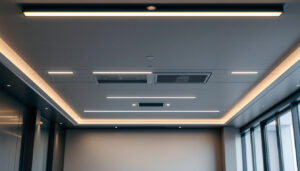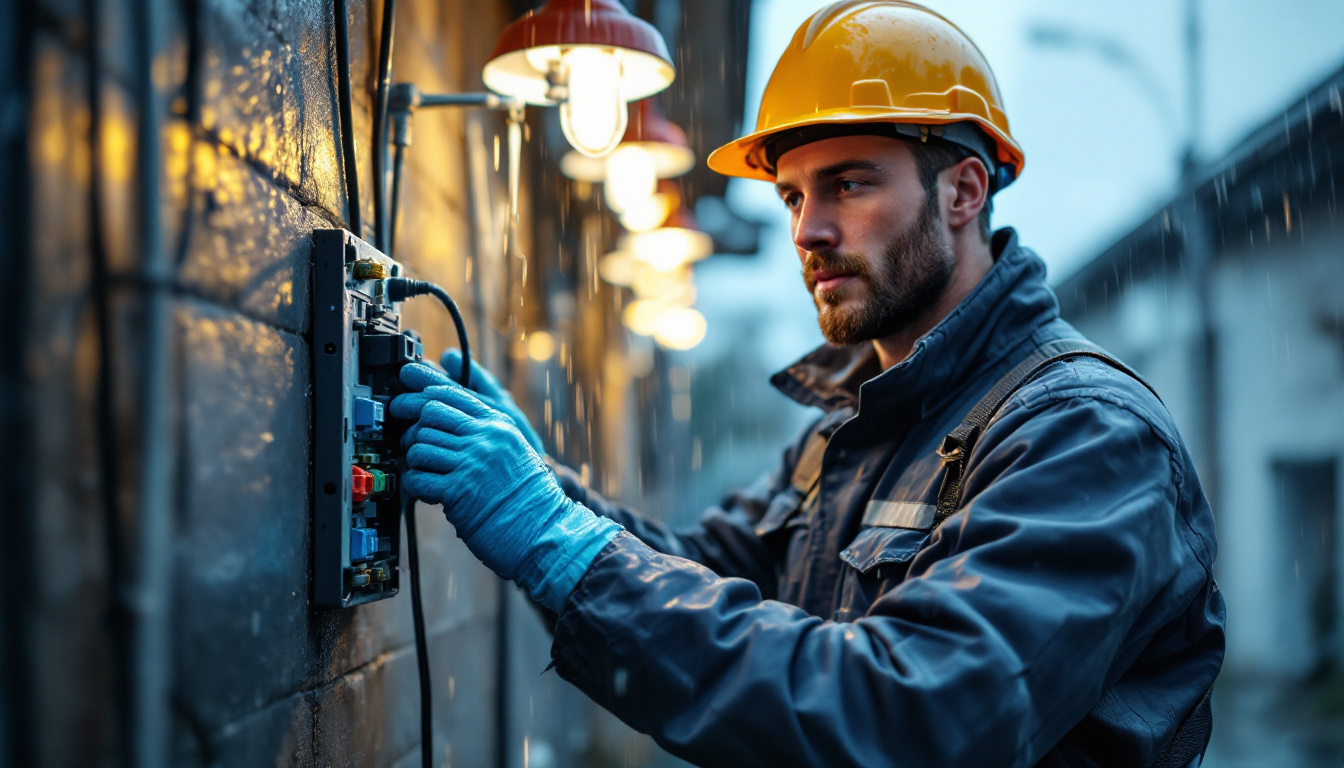

Fluorescent lighting has been a staple in commercial and industrial settings for decades, offering energy efficiency and versatility. For lighting contractors, understanding the intricacies of fluorescent systems is crucial to delivering effective solutions to clients. This article aims to simplify the complexities surrounding fluorescent lighting, providing essential insights that can enhance project execution and client satisfaction.
Fluorescent lighting operates on a principle that differs significantly from traditional incandescent bulbs. At its core, it utilizes a gas-filled tube coated with phosphor. When an electric current passes through the gas, it emits ultraviolet light, which then excites the phosphor coating, producing visible light. This technology offers several advantages, making it a preferred choice in various applications. For instance, fluorescent lights are known for their energy efficiency, consuming significantly less power than incandescent bulbs while providing comparable brightness. This efficiency not only leads to lower electricity bills but also contributes to a reduced carbon footprint, making fluorescent lighting an environmentally friendly option.
A typical fluorescent lighting system consists of several key components, including the lamp, ballast, and fixture. Each element plays a vital role in the overall functionality of the system. The lamp, available in various sizes and color temperatures, determines the quality and intensity of light output. The ballast, on the other hand, regulates the current and voltage supplied to the lamp, ensuring optimal performance. Additionally, modern electronic ballasts have largely replaced traditional magnetic ballasts, offering benefits such as flicker-free operation and improved energy savings.
Fixtures house the lamps and ballasts, providing the necessary support and protection. They come in various designs, from surface-mounted to recessed options, allowing for versatility in installation. Understanding these components is essential for contractors, as it allows for informed decisions when selecting and installing fluorescent lighting systems. Moreover, proper fixture selection can enhance the aesthetic appeal of a space while ensuring that the lighting meets specific needs, such as task lighting in work environments or ambient lighting in retail settings.
Fluorescent lamps come in various types, each designed for specific applications. The most common types include T8, T5, and T12 lamps. T8 lamps, with a diameter of one inch, are widely used in commercial settings due to their balance of efficiency and light output. T5 lamps, being slimmer and more efficient, are often preferred for applications requiring higher lumen output in tighter spaces. T12 lamps, while less common today, are still found in older installations. In addition to these standard types, there are also specialty fluorescent lamps designed for specific tasks, such as grow lights for horticulture or black lights for artistic effects.
Contractors should be aware of the differences between these lamp types, as they impact not only the installation process but also energy consumption and maintenance requirements. Choosing the right lamp for a specific application can significantly affect overall project outcomes. Furthermore, advancements in fluorescent technology have led to the development of high-efficiency lamps that provide even greater energy savings and longer lifespans, making them an appealing option for both new installations and retrofitting older systems. Understanding the nuances of these various lamp types will empower contractors to make choices that enhance functionality while optimizing energy use.
Fluorescent lighting offers numerous benefits that make it an attractive option for contractors and clients alike. From energy efficiency to longevity, understanding these advantages can aid in making informed recommendations to clients.
One of the most significant benefits of fluorescent lighting is its energy efficiency. Compared to incandescent bulbs, fluorescent lamps consume significantly less energy to produce the same amount of light. This not only reduces electricity bills but also contributes to a lower carbon footprint, aligning with the growing demand for sustainable practices in the lighting industry.
For contractors, highlighting the energy-saving potential of fluorescent lighting can be a compelling selling point. Clients are increasingly interested in solutions that not only meet their lighting needs but also contribute to long-term savings and environmental responsibility. Additionally, many regions offer incentives and rebates for businesses that switch to energy-efficient lighting, further enhancing the appeal of fluorescent options. These financial incentives can help offset initial installation costs, making the transition to fluorescent lighting even more attractive for budget-conscious clients.
Fluorescent lamps have a longer lifespan than traditional incandescent bulbs, often lasting up to 10,000 hours or more. This longevity translates to reduced maintenance costs and less frequent replacements, which can be particularly advantageous in commercial settings where downtime can be costly.
Contractors should emphasize the maintenance benefits of fluorescent lighting when discussing options with clients. By choosing fluorescent systems, clients can enjoy a reliable lighting solution that minimizes disruptions and maintenance efforts. Furthermore, many modern fluorescent fixtures are designed with advanced technology that enhances their durability and performance. For instance, electronic ballasts can improve efficiency and reduce flickering, providing a more consistent light output that can be particularly beneficial in environments requiring high-quality illumination, such as retail spaces or offices. This not only enhances the aesthetic appeal of the space but also contributes to a more productive atmosphere for employees and customers alike.
While fluorescent lighting offers many advantages, proper installation is crucial to ensure optimal performance and longevity. Contractors must be aware of various factors that can influence the installation process and the overall effectiveness of the lighting system.
Choosing the right ballast is essential for the successful operation of fluorescent lamps. There are two primary types of ballasts: magnetic and electronic. Magnetic ballasts are older technology and tend to be less efficient, while electronic ballasts offer better performance, energy savings, and compatibility with dimming systems.
Contractors should assess the specific requirements of the project when selecting a ballast. Factors such as the type of fluorescent lamp, the desired light output, and any dimming needs should all be considered to ensure a successful installation.
The placement and design of fixtures can significantly impact the effectiveness of fluorescent lighting. Proper spacing and alignment are crucial to achieving uniform light distribution and minimizing shadows. Contractors should conduct thorough lighting design assessments to determine the optimal placement of fixtures based on the intended use of the space.
In addition, considering the aesthetics of the fixtures is important, especially in commercial environments where visual appeal can influence customer perceptions. Selecting fixtures that complement the overall design of the space can enhance both functionality and aesthetics.
Compliance with regulations and standards is a critical aspect of any lighting project. Fluorescent lighting systems must adhere to various codes and guidelines to ensure safety and efficiency. Understanding these regulations is essential for contractors to avoid potential pitfalls during installation.
Many regions have implemented energy codes that dictate minimum efficiency standards for lighting systems. These codes often require the use of energy-efficient technologies, including fluorescent lighting. Contractors should stay informed about local energy codes to ensure compliance and avoid costly penalties.
Additionally, being knowledgeable about energy codes can enhance a contractor’s credibility with clients, as it demonstrates a commitment to responsible and compliant practices.
Safety is paramount in any electrical installation, and fluorescent lighting systems are no exception. Contractors must adhere to safety standards set forth by organizations such as the National Electrical Code (NEC) and the Occupational Safety and Health Administration (OSHA). These standards cover various aspects of installation, including wiring, grounding, and fixture placement.
By prioritizing safety and compliance, contractors can protect themselves and their clients from potential hazards and liabilities associated with improper installations.
As technology continues to evolve, fluorescent lighting is also undergoing changes that may impact its role in the lighting industry. Understanding these trends can help contractors stay ahead of the curve and provide clients with the most up-to-date solutions.
One of the most significant trends in lighting is the integration of smart technology. While LED lighting has taken the lead in this area, fluorescent systems are also beginning to incorporate smart features. This includes the ability to control lighting remotely, adjust brightness, and even change color temperatures based on user preferences.
Contractors should explore the potential for integrating smart technology into fluorescent lighting systems, as this can enhance the user experience and provide added value to clients. Offering smart solutions can differentiate a contractor in a competitive market.
While fluorescent lighting remains a viable option, the shift towards LED lighting is undeniable. LED technology offers even greater energy efficiency and longer lifespans, leading many clients to consider LED as a replacement for fluorescent systems. Contractors should be prepared to discuss the benefits and drawbacks of both lighting technologies, helping clients make informed decisions based on their specific needs.
However, it is essential to recognize that fluorescent lighting still has its place in certain applications. Understanding when to recommend fluorescent over LED can position contractors as knowledgeable and trustworthy advisors in the industry.
Fluorescent lighting continues to be a valuable option for lighting contractors, offering energy efficiency, longevity, and versatility. By simplifying the complexities of fluorescent systems, contractors can enhance their expertise and provide clients with effective lighting solutions. Understanding the technology, benefits, installation considerations, regulations, and future trends will empower contractors to make informed decisions and recommendations.
As the lighting industry continues to evolve, staying informed and adaptable will be key to success. By embracing both fluorescent and emerging technologies, contractors can ensure they meet the diverse needs of their clients while contributing to a more sustainable future.
Ready to elevate your lighting projects with the efficiency and versatility of fluorescent lighting? Look no further than LumenWholesale for all your lighting needs. We provide contractors with top-quality, spec-grade lighting products at unbeatable wholesale prices, ensuring you get the most value for your investment. Our extensive selection is designed to meet the highest industry standards, so you can trust in the performance and reliability of every product. Plus, with free shipping on bulk orders, you can enjoy premium lighting solutions without any hidden fees. Don’t compromise on quality or cost. Experience the perfect blend of affordability and convenience today by visiting Wholesale Lighting at the Best Value and make your next project shine with LumenWholesale.

Explore how LED tape strip lighting is revolutionizing energy efficiency in homes and businesses.

Discover essential tips for selecting industrial LED bulbs and learn how to sidestep common pitfalls in lighting projects.

Discover how waterproof electrical connectors are revolutionizing the lighting industry, offering enhanced durability and safety for contractors.

Discover why LED flood lights are revolutionizing the lighting industry and what every contractor needs to know.
Get notified when NEW deals are released.
Optimize your budget with wholesale discounts.
Only top-quality, specification-grade lighting products.
No additional costs at checkout - what you see is what you pay.
We understand the unique needs of contractors.